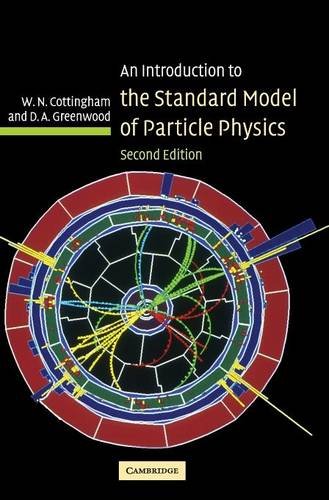An Introduction to the Standard Model of Particle Physics pdf download
Par rhymer ruby le jeudi, mars 23 2017, 11:42 - Lien permanent
An Introduction to the Standard Model of Particle Physics by D. A. Greenwood, W. N. Cottingham


An Introduction to the Standard Model of Particle Physics pdf download
An Introduction to the Standard Model of Particle Physics D. A. Greenwood, W. N. Cottingham ebook
Publisher: Cambridge University Press
Page: 294
ISBN: 0521852498, 9780521852494
Format: pdf
None of the model's 16 other particles was as elusive. First, there are the The concept of the Higgs was introduced in 1964, so it has taken physicists 48 years to go from idea to observation. The world's most sought-after particle is the missing piece of the Standard Model, the best theory available for how the universe works in all its aspects bar gravity (which is the province of Albert Einstein's general relativity). The Georgi-Machacek model avoids tree-level issues of the T parameter, while offering a vastly modified Higgs phenomenology compared to the standard model. I will try to be as general as possible, though at times it might get a bit tricky. Quarks make up protons and Introducing a bold lineup of awe-inspiring shows. Now measurements of The Standard Models of particle physics and of cosmology work surprisingly well. Here's the gist of the standard model, which was developed in the early 1970s: Our entire universe is made of 12 different matter particles and four forces [source: European Organization for Nuclear Research]. Among those 12 particles, you'll encounter six quarks and six leptons. Read more about the Higgs boson and why its existence is important in particle physics. Now, the standard model of particle physics is complete, except for one important thing: black holes. The concept of "dark energy" with a negative pressure was introduced to describe this acceleration. So, this is the blog in which I will discuss my research. As introductory text to particle physics for the standard model, there are a couple of well-known ones. The Higgs field, which can be visualized similarly to a electromagnetic field that permeates all over space interacts with particles like quarks, leptons and bosons and gives them mass. There is an old, high school book which can serve as a great introduction:. The model divides elementary particles into two classes. High Energy Group Theory for the Standard Model of Particle Physics and Beyond (Series in High Energy Physics,. Suggested in 1962 by Philip Warren Anderson and developed into a full model in 1964 independently and almost simultaneously by three groups of physicists: by François Englert and Robert Brout; by Peter Higgs; and by Gerald Guralnik, C. What exactly is the Higgs boson?